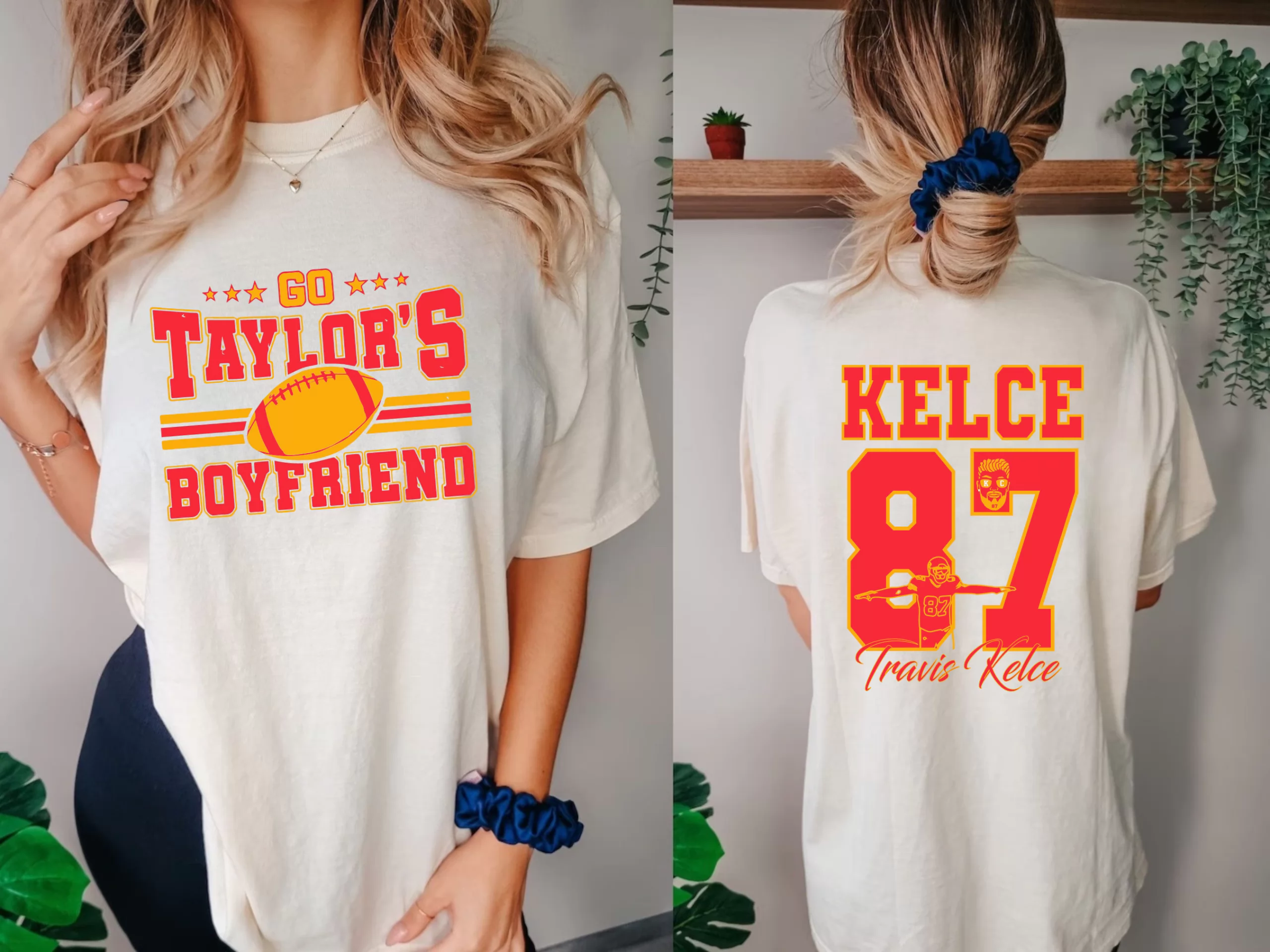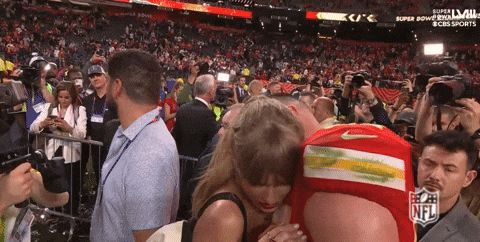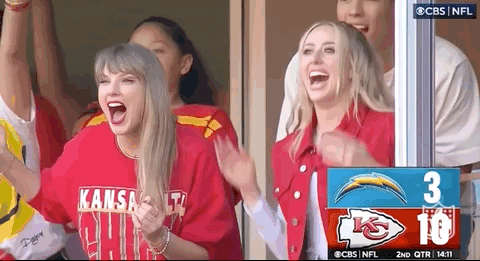“SWELCE” and “HEAT WENTZ”: The Politics, Para-sociality, and Pairing of Sports and Popular Music
Francesca Sobande / Cardiff University & Jenessa Williams / The University of Leeds

The worlds of sports and popular music often merge, from the music accompanying the ring entrance of boxers, to the politics of musicians performing at the National Football League’s (NFL) Super Bowl halftime show, and the marketing impact of FIFA video game soundtracks featuring emerging artists. Although the arenas of sports and popular music are different, at the center of both are forms of performance and fan engagement experiences.
Extensive studies have highlighted the role of the internet in cultivating fannish communities and para-social relationships with celebrities that are not reciprocated. Within stan culture, several practices that are normally associated with organized sports become reified: an unwavering loyalty for ‘the team’, the tendency to be aggressively competitive when defending one’s ‘squad’, and an increasing interest in data fandom, monitoring an artist’s performance in ongoing league tables of streams, awards and ‘winnable’ metrics. But what do recent portrayals of sports figures in popular music (and vice versa) tell us about cultural politics and para-social dynamics? Informed by studies of sports soundscapes and music fandom, here, we reflect on the merging of sports and popular music today.
Celebrity culture often thrives best when it is presented as part of a ‘team’, offering fans a chance to identify not just with a singular figure, but with a wider marketable brand, such as a ‘power couple’ (Cobb and Ewen 2015). A case in point is the powerful presence of two US pop-cultural titans: singer-songwriter Taylor Swift and NFL footballer Travis Kelce (nicknamed ‘Swelce’ by fans). This romantic union was one of the biggest celebrity news stories of 2023. Unlike the fellow creatives of her previous relationships, Swift’s fans have embraced Kelce as a partner whose sporting success and athletic discipline feels ‘worthy’ of her, but who does not overshadow (or feel intimidated by) her status as one of her generation’s best-selling musicians.
Then again, their relationship is framed in the media in ways that reinforce dominant gender politics. Namely, certain narratives push the age-old high-school trope of the ‘cheerleader’/‘jock’ power couple, reflecting pop culture’s fixation on youth and status, and the idealisation of All-American (read, white and heteronormative) romance. This is indicated by press hysteria surrounding sightings of Swift cheering on Kelce at NFL games, celebrating wins with a much-captured kiss.

Having ‘soft-launched’ their courtship via appearances at each other’s stadium workplaces, both parties have elsewhere found ways to offer glimpses into their love story through forms of professionalized, one-to-many communication. For example, clips from a performance in Buenos Aires in which Swift reframed the lyrics of her song ‘Karma’ to reference Kelce went viral, and complimented Swift’s willingness to narrativize her life in lyrical real-time, offering feelings of fan closeness/para-sociality and marketable ‘lore’.
To Kelce’s end, the ability to make measured comments about the relationship on his sporting podcast ensures that he remains in control of what is shared, but can still court lucrative social media attention and interest from the pop-cultural press, a relationship previously piqued via his dating reality TV show Catching Kelce (2016).
Swift’s presence at NFL games reportedly boosted Kansas City Chief’s merchandize by 400%, with ticket sales increasing threefold. This potential to connect with a female youth audience was capitalized upon by the NFL, who integrated images and puns of Swift’s songs into their official brand messaging, but were also critiqued by sports fans who felt aggrieved that Swift was ‘distracting’ from the games’ coverage, illustrating a gendered tension between perceptions of the ‘auteur’ and their ‘muse’. Nonetheless, an advertisement by skincare company Cetaphil US demonstrated Swift as a powerful vessel through which sporting dads could learn to bond with their fangirl daughters, becoming one of the most viewed clips of the 2024 Super Bowl.

While Taylor’s presence at NFL games includes a focus on her support of Kelce, much media attention is also paid to the famous women (her ‘squad’) who accompany her (e.g., Blake Lively and Ice Spice). In other words, media coverage of Swift at NFL games is shaped by both the conventions of sports commentary and the specifics of her celebrity appeal. Accelerated by the sense of mainstream ‘monoculture’ that many people experience online, Swelce’s union may feel like a victory for (some of) those who previously felt marginalized by sports culture.
Indeed, Swelce is a celebrity relationship, but it’s also an emblem of mediated patriotism, casting two beloved, All-American figures into an even higher collective profile without either party having to compromise on their own career trajectory. In the mid-noughties, Swift won over a legion of introverted young fans with songs like ‘You Belong With Me’, situating herself as the girl sitting shyly ‘on the bleachers’ rather than in the thick of high-school popularity. Specifically, ‘[i]n her early work, white femininity is called upon through the presentation of Swift as virtuous fairytale princess, who wears elaborate gowns and pristine white dresses’ (Prins 2020: 144). In 2024, winning the sportsman’s heart on her own terms, Taylor appears to some as the American Dream made manifest, able to transcend multiple markets.
Heat Wentz: Basketball, Emo & Race
Other spaces where the cultural politics of sports and popular music play out include the emo genre/subculture, which oscillates between an alternative and mainstream status since its mid-1980s inception.
Known for emotion-driven music and an aesthetic which includes a signature sweeping fringe hairstyle, emo has embraced the idea of being an ‘outsider’ and ‘nerdish’. That said, emo’s contemporary resurgence has involved many examples of its connection to different forms of popular culture, including sports stardom. This is highlighted by the music video for the song ‘So Much (For) Stardust’ by the iconic band Fall Out Boy (a group who, incidentally, appeared on the recent Taylor Swift ‘Speak Now’ re-recording after she stated that they were one of her biggest lyrical inspirations as a teen).
Cameoed by National Basketball Association (NBA) player Jimmy Butler, the 2024 music video for ‘So Much (For) Stardust’ dropped mere months after viral online media coverage of Butler looking emo at a press junket. At that time, he had been dubbed ‘Heat Wentz’, nodding to Butler’s basketball team (Miami Heat) and to Fall Out Boy’s bassist Pete Wentz.


For decades, emo has been vulnerable to trend-based co-option and corporate attempts to cash in on ‘subcultural capital’. However, as is indicated by Butler’s foregrounding as ‘Heat Wentz’ in the ‘So Much (For) Stardust’ video, emo also taps into the coolness associated with elsewhere, such as that of ‘the televisual politics’ of Black sports figures. While further research needs to be done surrounding waves of emo and their mainstream commodification in the 2020s, the response to Butler’s seemingly sincere engagement with the genre opened up valuable conversations about the importance of diverse representation in emo, and wider acknowledgement of Black fans who care about both ‘jock’ sports and more introverted forms of musical/stylistic expression.
Though ‘Swelce’ and ‘Heat Wentz’/Jimmy Butler are but two recent examples of where sports and music connect, the marketing potential appears endless. Rapper Jack Harlow recently had a lead role in a re-make of the classic 90s movie White Men Can’t Jump (2023), whilst British singer-songwriter Sam Fender has maintained a close relationship with Newcastle United FC, similar to how Drake acts as an ambassador for basketball team Toronto Raptors. Even in K-Pop, British football shirts have become a staple performance uniform for idols, often with comedic outcomes.

Sports and music may draw different audiences and forms of fannish expression, but analysis at the intersection of both offers a crucial avenue for exploration of the racial, gender, and celebrity politics of their pairing.
Image Credits:
- Taylor and Travis shirt, on Printerval.
- Taylor Swift and Travis Kelce kissing, The official GIPHY page of the NFL.
- Promotional video for Catching Kelce.
- Taylor Swift cheering at an NFL game, The official GIPHY page of the NFL.
- Fall Out Boy – So Much (For) Stardust starring Jimmy Butler (Official Video) on YouTube.
- Jimmy Butler sweeping his fringe at a press junket, The official NBA channel on GIPHY.
- Jimmy Butler and Pete Wentz in Fall Out Boy’s ‘So Much (For) Stardust’ music video, @nbasource on Tumblr.
- Sinqua Walls and Jack Harlow in White Men Can’t Jump (2023), @harlowgifs on Tumblr.
Cobb, Shelly and Ewen, Neil (eds) (2015) First Comes Love: Power Couples, Celebrity Kinship, and Cultural Politics. London: Bloomsbury.
Prins, Annelot (2020) “From awkward teen girl to aryan goddess meme: Taylor Swift and the hijacking of star texts”. Celebrity Studies 11(1): 144–148.